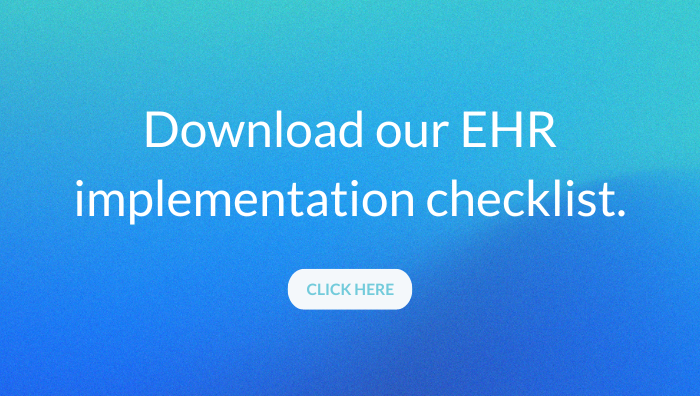The Challenges of “Go Live” with an EHR: Common Mistakes and the Importance of Maintenance Packages
Implementing a new Electronic Health Record (EHR) system is an essential step towards streamlining healthcare operations and improving patient care. However, the “Go Live” phase can be fraught with challenges, often leading to unforeseen issues that require immediate attention and ongoing maintenance. One common pitfall is not involving the right people in the EHR implementation process.
The Real-World Scenario: Oracle Health’s EHR Implementation
Say you’re a healthcare organization working with Oracle Health to start using their EHR platform. While Oracle Health provides robust solutions, the success of the implementation heavily depends on the input from those who will be using the platform daily. Unfortunately, many organizations make the mistake of involving only the heads of departments in the decision-making process, rather than the actual end-users.
Issues arising from inadequate input
1. Lack of Practical Insight: Heads of departments might have a broad understanding of the organization’s goals but often lack the intricate knowledge of day-to-day operations. This gap leads to critical details being overlooked during the setup phase. For instance, appointment types and workflows may not be accurately represented, causing significant disruptions once the system goes live.
2. Decision-Making Bottlenecks: Department heads are typically busy with strategic decisions and may not be able to devote sufficient time to the specifics of EHR configurations. This can result in delays and suboptimal setups, as the importance of detailed information provided to Oracle Health during the setup phase is underestimated.
3. Preparation Gaps: Despite Oracle Health’s efforts to configure the EHR platform according to organizational needs, the lack of detailed, practical input means the platform may not be fully ready for use at Go Live. The result is a system that doesn’t meet the frontline staff’s requirements, leading to frustration and inefficiencies.
Common mistakes during “Go Live”
It’s common for mistakes to occur during the Go Live phase due to the issues mentioned above. These can include:
– Incorrect configuration of appointment types and schedules.
– Misaligned user roles and permissions.
– Inefficient workflows that slow down operations.
– Data migration errors.
These mistakes can cause significant disruptions and impact patient care, making it imperative to address them promptly.
Solution A: Involve your clinicians in the configuration process
To avoid these challenges, it would greatly help to involve clinicians and frontline staff in the EHR implementation process. They are the ones who will be using the platform every day, and their input is valuable for ensuring a smooth transition. Here are some key steps to follow:
- Build a multidisciplinary team: Include representatives from each department that will use the EHR in your implementation team. This ensures that all departments’ needs and workflows are considered during configuration.
- Conduct thorough user training: Train users on how to navigate and utilize the EHR system before Go Live. This reduces confusion and increases confidence in using the new platform.
- Encourage open communication: Create a culture of open communication, where end-users can share their feedback and concerns about the EHR configuration. This allows for adjustments to be made before Go Live, preventing potential issues.
However, these users – clerks and clinicians – are already incredibly busy with their own roles so the above may not be possible. So what’s the alternative?
Solution B: Fixes and Maintenance Packages
Given these challenges, it’s crucial for healthcare organizations to invest in comprehensive fix and maintenance packages with experienced EHR consultants. Here’s why:
1. Immediate issue resolution: Consultants can quickly identify and rectify configuration errors, ensuring the system functions smoothly without prolonged downtime.
2. Ongoing support: A maintenance package provides continuous support, helping the organization adapt to changes and optimize the EHR system over time.
3. Training and guidance: Skilled consultants can offer training to ensure that all staff members are proficient in using the system, reducing the risk of user error and improving overall efficiency.
4. Customization: EHR consultants can tailor the system to better fit the specific needs of the organization, based on feedback from actual users rather than just department heads.
Conclusion
The “Go Live” phase of an EHR implementation is a critical juncture that can determine the success or failure of the project. By involving the right people in the setup process and investing in robust fix and maintenance packages, healthcare organizations can mitigate common pitfalls and ensure a smoother transition.
At Oracle Health and other leading EHR providers, the goal is to create systems that enhance healthcare delivery. With the right approach and ongoing support, this goal is well within reach.
Is your organization planning an EHR implementation? To take the first step towards a seamless process, get in touch with Oracle Health specialists at EHR Enhancify. Their team of experts is ready to provide the guidance, support, and solutions your organization needs to optimize its EHR system.
Don’t let potential pitfalls impede your progress—reach out to EHR Enhancify today and ensure a successful Go Live for your healthcare facility. Contact us now to schedule a consultation and discover how we can help you achieve your EHR goals.




